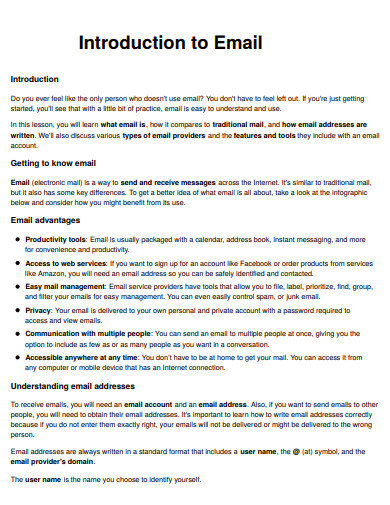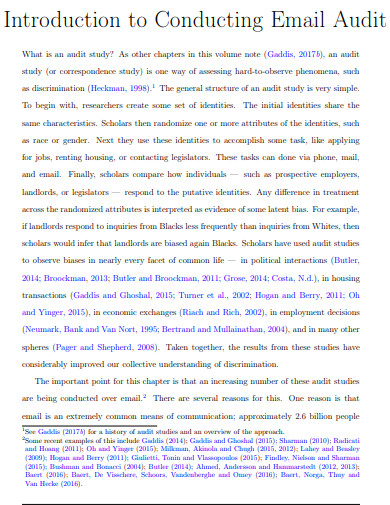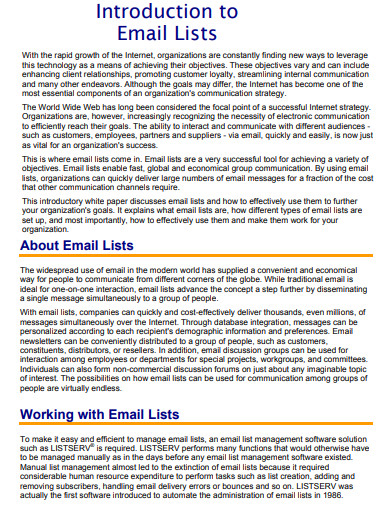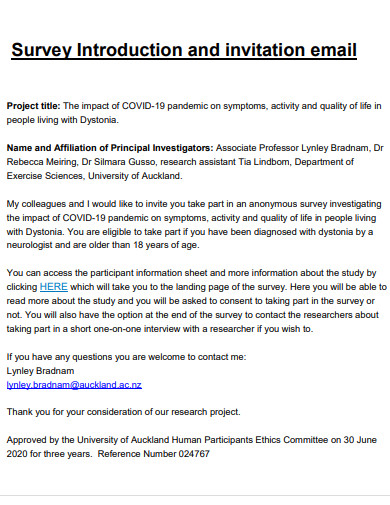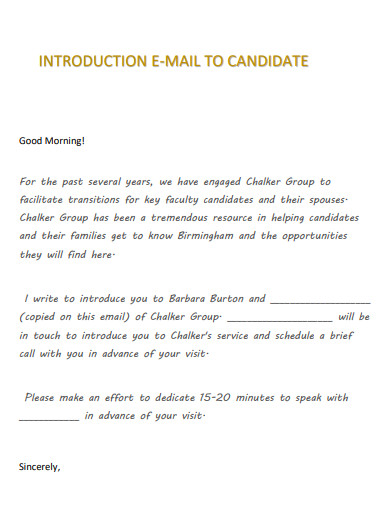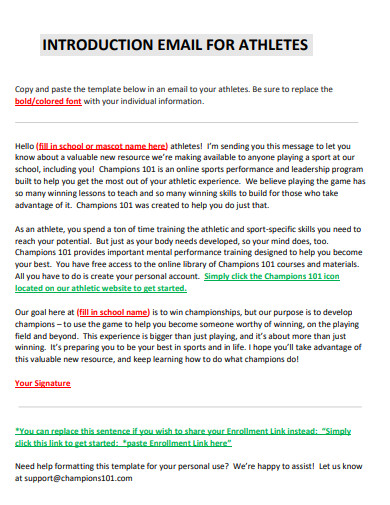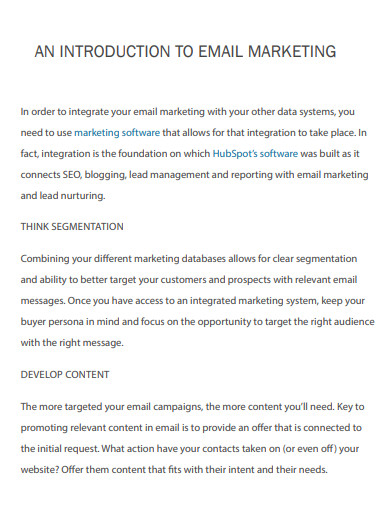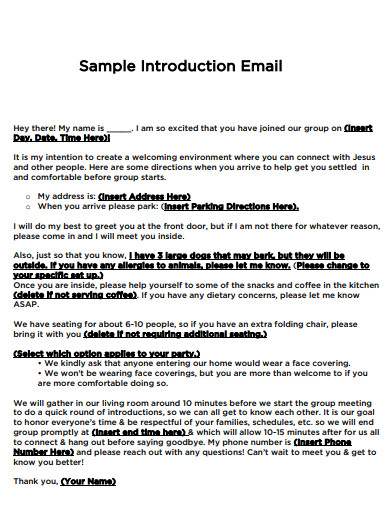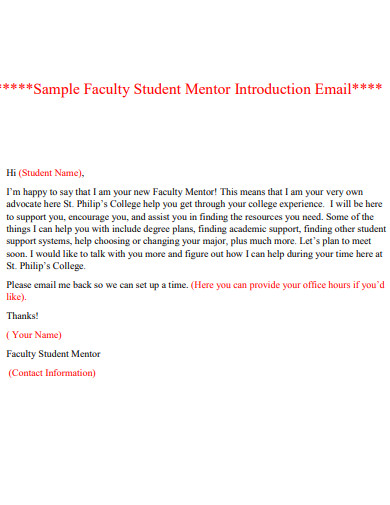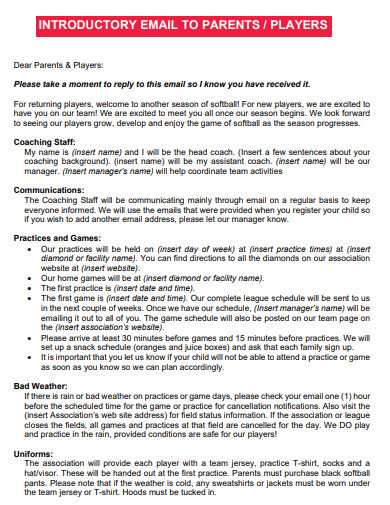Email marketing is one of the most common and widely used forms of online marketing strategy. In this form of marketing, a company communicates with potential customers, in particular their subscribers, by sending them emails about the company and the products and services it offers. It is for this reason that whenever you subscribe to a specific website or page, or whenever you are asked for your email address, it is likely that you will receive updates and other related information.
The contents of your first email to a new client are very important, regardless of whether you have just started a new business or have just met a new customer. In order for your customers to consider giving your company a shot, you need to be able to introduce it to them in a manner that is not only respectful but also interesting. Let’s talk more about this in the following section so you can learn more about it. In addition, if you need to begin preparing this kind of email, then we have a list of introduction email samples that are available for free download on this page. You can access the list using the link provided.
10+ Introduction Email Samples
1. Introduction to Email
2. Introduction to Conducting Email
3. Introduction to Email Lists
4. Survey Introduction and Invitation email
5. Introduction email to Candidate
6. Introduction email for Athletes
7. Introduction to Email Marketing
8. Introduction to Formal Email
9. Sample Introduction Email
10. Student Mentor Introduction Email
11. Introduction Email to Parents
What Is an Introduction Email?
An email has become an increasingly common method of communication, both in personal and professional settings. It is easy to use, quick and can be accessed whenever and wherever there is an internet connection, making it a very convenient option. Emails are the medium of choice for communicating both internally and externally within the context of a business organization. When it comes to marketing a product or service, emails are also extremely useful due to the fact that they are simple to use and cost less than other marketing methods. Having said that, it is essential to have a working knowledge of how to use email to market your company because there are a number of considerations that need to be given priority. One of these aspects is the actual content.
When you are about to send an email to a prospective customer for the first time to tell them about your company and the business that you do, then you need to compose appropriate content to send to them. When there is a need for you to explain what your company does to first-time clients, what you should do is send what is known as a business introduction email. As the proverb goes, “first impressions are the most lasting,” so it is important to pay attention to what you say or discuss for the very first time. It may appear simple to write an introductory email, but your main concern is whether or not the recipient will respond to you. Your customers might have dozens of emails to check, and while they might eventually open yours, you need something to captivate their attention and get them interested in your company before you can expect them to do so. As a result, the process of writing an introduction email for a business should be given significant thought.
How To Create an Introduction Email
Your company’s potential customer base can be expanded with the assistance of an engaging and professionally written email introduction to the business. And that is not the end of it at all; in order to keep them up to date, you need to have an effective follow-up strategy. It is possible that customers will overlook an email from time to time because they are likely inundated with numerous other emails. Email marketing can be hit-or-miss at times, which is why you need to carefully strategize how you plan to send your email, the content of the email, and how you will follow up with the recipient after the email has been sent. It is also a good idea to segment the mailing list and make it as personal as possible. This is because you need the prospect to be able to relate to you in order to establish a trustworthy relationship with them. We have compiled a list of helpful hints that you can use when writing an introduction email.
- Understand the target market
It is important to first understand who your target market is and where they can be found before sending your email or even writing the content of your email. The manner in which you introduce the topic, as well as the content that comes after, will depend on the outcome of this. It is important that the manner in which you present yourself and the tone of the email both matter. For instance, you need to introduce a trendy and colorful clothing line to teenagers and college students; consequently, it is essential that you begin your email in an upbeat and enthusiastic tone. - Subject Line
The subject line is yet another significant aspect that requires your careful consideration and attention. It needs to be something that grabs the attention of the customer or client right away. This is of the utmost importance for customers who frequently have dozens of emails sent to them in a single day. Therefore, instead of using a simple and conventional subject line, you should consider using a line that is captivating and pertinent to your company. If, on the other hand, you are about to send a proposal to your client that they have been anticipating for some time, you have the option of selecting a more businesslike approach. - Greetings
Your email should have a statement at the beginning that makes an appeal to the industry as well as the current situation. For instance, the manner in which you address the recipient of your message is important. The word “Dear” can be used in a more formal setting, whereas the word “Hi” can be addressed to recipients in a more relaxed industry. Both of these phrases can be used, however, in a variety of contexts and in a variety of ways.In addition, the manner in which you address the customer by name is important. It is preferable to address someone by using only their first or last name because using their full name has a more mechanical sound to it and can be utilized in a significantly wider variety of contexts.
- Opening Line
Due to the fact that this is an introductory email, it is critical that you are aware of how to approach your customer. Imagine that you are having a conversation with a person on a more personal level in which you are addressing their issue and explaining how you believe your company may be able to assist them. - Explanation
In this section of the email, you will be expected to provide a concise justification for why you are contacting the client in question. You might have seen their engagement posted somewhere or found their business card, and you believe that if you send them an email, you will increase the likelihood that they will be interested in the product or service that you are about to offer them.You need to be able to align your goals with the purpose of why you are sending out the email in the first place so that you can come up with the appropriate explanation. Be sure to maintain consistency while avoiding being demanding. - How You Can be Contacted
Inform your client at the end of the email that they are welcome to get in touch with either you or your business at any time. It is strongly recommended that you include your contact information, including an email address, telephone numbers, and even the address of your place of business. In addition, it is important to convey your gratitude and appreciation for the time spent reading the email. - Follow-Ups
Because the response is not guaranteed for every email that is sent, it is essential that you make an effort to follow up with your customers. There are many different ways to accomplish this, such as by sending another email, making a call, sending a text message, or communicating with a private message. However, you should be aware of your limits; if you come across as persistent to your client, this may occasionally irritate them. In addition, the manner in which you approach your customer when following up with them is quite significant, which means that you need to be aware of what to say and when to say it.
FAQs
Why are emails beneficial to businesses?
Aside from being delivered fast in comparison to traditional posts, it’s free to use and could be accessed anytime and anywhere. Plus you are able to attach files when sending an email.
Why is it important to introduce your business?
A proper introduction of your business is needed so your client and business partners will help bring credibility to your company and brand. This will get you at the right start of things which may lead to better and bigger opportunities.
What is Email Marketing?
This is one type of marketing method where you send emails to your clients to promote your services or products. It helps increase brand awareness and boost sales.
What you say and how you say it in the email that you use to introduce yourself and your company is very important. The credibility of your company might be strengthened and improved as a result of this. Download one of our completely free templates right away to ensure that you will be able to write an effective introduction email.
Related Posts
Written Warning
Teacher Lesson Plan
Visitors Log
Reflective Writing
Briefing Note
Timetable
Training Evaluation Forms
Acceptance Speech
Scientific Reports Samples & Templates
Attendance List Samples & Templates
Sample Meeting Minutes Templates
Presentation Speech Samples & Templates
Ukulele Chord Chart Samples & Templates
Retirement Speech Samples & Templates
Weekly Schedule Samples & Templates

